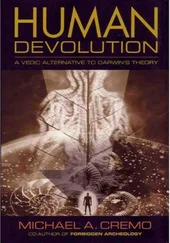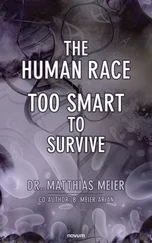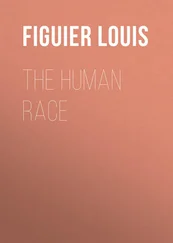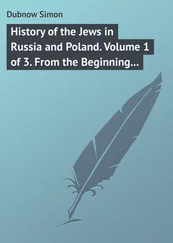Michael Cremo - Forbidden Archeology - The Hidden History of the Human Race
Здесь есть возможность читать онлайн «Michael Cremo - Forbidden Archeology - The Hidden History of the Human Race» весь текст электронной книги совершенно бесплатно (целиком полную версию без сокращений). В некоторых случаях можно слушать аудио, скачать через торрент в формате fb2 и присутствует краткое содержание. Год выпуска: 1992, ISBN: 1992, Издательство: Torchlight Publishing, Жанр: Старинная литература, на английском языке. Описание произведения, (предисловие) а так же отзывы посетителей доступны на портале библиотеки ЛибКат.
- Название:Forbidden Archeology: The Hidden History of the Human Race
- Автор:
- Издательство:Torchlight Publishing
- Жанр:
- Год:1992
- ISBN:9780892132942
- Рейтинг книги:4 / 5. Голосов: 1
-
Избранное:Добавить в избранное
- Отзывы:
-
Ваша оценка:
- 80
- 1
- 2
- 3
- 4
- 5
Forbidden Archeology: The Hidden History of the Human Race: краткое содержание, описание и аннотация
Предлагаем к чтению аннотацию, описание, краткое содержание или предисловие (зависит от того, что написал сам автор книги «Forbidden Archeology: The Hidden History of the Human Race»). Если вы не нашли необходимую информацию о книге — напишите в комментариях, мы постараемся отыскать её.
Forbidden Archeology: The Hidden History of the Human Race — читать онлайн бесплатно полную книгу (весь текст) целиком
Ниже представлен текст книги, разбитый по страницам. Система сохранения места последней прочитанной страницы, позволяет с удобством читать онлайн бесплатно книгу «Forbidden Archeology: The Hidden History of the Human Race», без необходимости каждый раз заново искать на чём Вы остановились. Поставьте закладку, и сможете в любой момент перейти на страницу, на которой закончили чтение.
Интервал:
Закладка:
At another locality, Morlan found two large mammal long bones and a bison rib, all three bearing incisions. Morlan (1986, p. 36) stated about these three bones and the bison radius discussed in the previous paragraph: “The cuts and scrapes . . . are indistinguishable from those made by stone tools during butchering and defleshing of an animal carcass. These four specimens comprise the most formidable barrier to a global dismissal of our supposed Early Wisconsinan archaeological record.”
Morlan (1986, p. 36) then added: “While this paper was in press . . . two cut bones . . . were sent to Dr. Pat Shipman, Johns Hopkins University, for examination under the scanning electron microscope. The marks were examined with reference to a collection of more than 1000 documented marks on bones, and the provenience [source] of the specimens was not made known until after the marks had been identified. The surface of the large mammal long bone fragment is damaged and difficult to evaluate, but Dr. Shipman positively identified the mark on the Bison rib as a tool mark.” Morlan (1986, p. 28) noted that stone implements have been found in the Old Crow River area and in nearby uplands, but not in direct association with bones.
What this all means is that the bones of St. Prest, and others like them, cannot be so easily dismissed. Evidence of the same type is still considered important today, and the methods of analysis are almost identical to those practiced in the nineteenth century. De Quatrefages and other scientists of that era compared specimens of cut bone with bones bearing undisputed signs of human workmanship. They also performed experiments on fresh bone. Like modern students of taphonomy, they gave detailed consideration to the changes that bones would undergo during the process of entombment and fossilization. They examined bones with a microscope. It should be noted that an electron microscope is not required for such study. A modern authority, John Gowlett (1984, p. 53), said: “Under a microscope, marks made by man are distinguishable in various ways from those made by carnivores. Dr. Henry Bunn (University of California) observed through an optical microscope at low magnification that stone tools leave V-shaped cuts, which are much narrower than rodent gnawing marks.”
As the Old Crow River case clearly shows, modern scientists use methods not much different from those practiced in the nineteenth century. We can just picture Thorson and Guthrie, in previous nineteenth-century incarnations, driving a horsedrawn cart, rather than a truck, and dragging behind them a big block of ice filled with bones over a rough gravel road in northern France, trying to prove the bones of St. Prest were marked by natural forces. Amusing as the image may appear, this is the type of technologically unsophisticated yet important work that still goes into resolving questions about incised bones. But as Morlan’s study shows, all questions about the Old Crow bones have not been clearly decided one way or another. He changed his mind about some of his specimens, but remained convinced about others. This ambiguity and inconclusiveness is typical of the empirical approach to such evidence.
In addition to debating whether or not the cut marks on the Old Crow bones were made by stone tools or natural forces, scientists were concerned about the age of the bones. If the bones were seen as bearing signs of human work and if they were also dated to the Early Wisconsin period, that would challenge the date for the earliest entry of humans into North America. The view now dominant is that Siberian hunters crossed the Bering Strait land bridge in the latest Pleistocene and passed through an ice-free corridor into what is now the United States about 12,000 years ago. Nevertheless, as we shall see throughout this book, there is a lot of controversial, hotly debated evidence showing that human beings were present in the Americas far before 12,000 years ago. Those scientists favoring the 12,000-year date tend to believe the marks on the Old Crow bones were caused by geological action of some kind, even though the marks have in some cases been judged identical to those caused by stone tools. This is something we shall encounter again and again. Similarly, preconceptions about the relatively recent origin of anatomically modern humans often influence scientists to reject evidence that they would otherwise take as proof of a human presence.
2.3 The Anza-Borrego Desert, California (Middle Pleistocene)
Another recent example of incised bones like those found at St. Prest, again related to the presence of humans in the New World, is a discovery made by George Miller, curator of the Imperial Valley College Museum in El Centro, California. Miller, who died in 1989, reported that six mammoth bones excavated from the Anza-Borrego Desert bear scratches of the kind produced by stone tools. Uranium isotope dating carried out by the U.S. Geological Survey indicated that the bones are at least 300,000 years old, and paleo-magnetic dating and volcanic ash samples indicated an age of some 750,000 years (Graham 1988).
One established scholar said that Miller’s claim is “as reasonable as the Loch Ness Monster or a living mammoth in Siberia,” while Miller countered that “these people don’t want to see man here because their careers would go down the drain” (Graham 1988). Here, perhaps, we see preconceptions influencing the established scholar to reject evidence which, if given a more suitably recent date, he might have accepted.
The incised mammoth bones from the Anza-Borrego Desert came up in a conversation we had with Thomas Deméré, a paleontologist at the San Diego Natural History Museum (May 31, 1990). Deméré said he was by nature skeptical of claims such as those made by Miller. He called into question the professionalism with which the bones had been excavated, and pointed out that no stone tools had been found along with the fossils. Furthermore, Deméré suggested that it was very unlikely that anything about the find would ever be published in a scientific journal, because the referees who review articles probably would not pass it. We later learned from Julie Parks, the present curator of George Miller’s specimens, that Deméré had never inspected the fossils or visited the site of discovery, although he had been invited to do so (Parks, personal communication, June 1, 1990).
As of June 1990, the Anza-Borrego mammoth bones were still under study. Deposits of sandy matrix were being painstakingly removed from the incisions on the bones, so that the incisions could be examined by a scanning electron microscope. Hopefully, inspection of the minute striations on the surfaces of the cuts under high magnification will confirm whether or not they are characteristic of stone tools. Parks (personal communication, June 1, 1990) said that one incision apparently continues from one of the fossil bones to another bone that would have been located next to it when the mammoth skeleton was articulated. This is suggestive of a butchering mark. Accidental marks resulting from movement of the bones in the earth after the skeleton had broken up probably would not continue from one bone to another in this fashion.
The lesson to be learned from the marked bones found at Old Crow River and in the Anza-Borrego Desert is this: the marked bones of St. Prest and others like them discovered in the nineteenth century should be kept in the active file of paleoanthropological evidence. Even today, scientists are not always able to immediately determine whether or not marks on bones were made by natural forces, animals, or humans. Much careful study and analysis is required to arrive at a conclusion, and even then not all experts will agree. Therefore the marked bones discussed in this chapter and the reports about them should be seriously examined, and be available for reexamination. If fossils do not pass the test of a certain investigator or school of investigators at a particular point in time, they should not be cast into the outer darkness, so that later researchers will not even know they exist. Rather they should be placed in a category of disputed evidence. In that way, in the event of improvements in the methods of analysis or changes in theoretical constructs of human prehistory, the evidence will be available for further study. Who knows? In the future, new pieces to the puzzle of human origins may give new meaning to old pieces that previously did not quite fit.
Читать дальшеИнтервал:
Закладка:
Похожие книги на «Forbidden Archeology: The Hidden History of the Human Race»
Представляем Вашему вниманию похожие книги на «Forbidden Archeology: The Hidden History of the Human Race» списком для выбора. Мы отобрали схожую по названию и смыслу литературу в надежде предоставить читателям больше вариантов отыскать новые, интересные, ещё непрочитанные произведения.
Обсуждение, отзывы о книге «Forbidden Archeology: The Hidden History of the Human Race» и просто собственные мнения читателей. Оставьте ваши комментарии, напишите, что Вы думаете о произведении, его смысле или главных героях. Укажите что конкретно понравилось, а что нет, и почему Вы так считаете.












